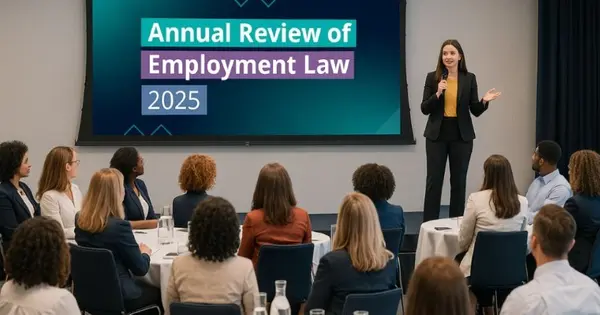Jason Elliott was called to the Bar of Northern Ireland in 2013 and is the Associate Head of School of Law at Ulster University. As a practising barrister, he has developed a largely civil practice representing individuals, companies and public bodies in litigation. This covers a wide range of areas including personal injuries, wills and employment law. In terms of employment law, he has represented both applicants and respondents in the Industrial Tribunal. At Ulster University, Jason lectures extensively on the civil areas of practise such as Equity and Trusts and delivers employment law lectures for both undergraduate and postgraduate students.
The claimant started working for the respondent’s predecessor in 2003. At that point, Clause 6 of his contract entitled him to benefits as detailed in the staff manual and offer letter. The offer letter outlined income protection plan which would pay staff on long-term sick 75% of their salary. It was also stated that the payments under the protection plan would increase by 5% each year (to protect against inflation). In 2006 the respondent took over the claimant’s employer. In 2009, the claimant began a period of long-term sickness absence and started to receive the income protection plan payments.
In 2015 the claimant realised that the 5% escalator was not being applied and brought a claim for unlawful deduction from wages. The escalator had actually been removed from the insurance plan in 2008. Both the Tribunal and EAT found that the offer letter and summary of benefits gave rise to a contractual entitlement. The respondent appealed this to the Court of Appeal.
The argument of the respondent was that the contract stated the sole source of the contractual right was the staff manual rather than an offer letter given at the time. The Court of Appeal examined the way in which the contract was formed. The staff manual at the time actually stated ‘your offer letter and terms of conditions of employment form the basis of your contract’. Therefore, the offer letter was crucial to those terms and when it stated that there was an attached summary of benefits it was also part of the claimant’s contract. The respondent argued that they could vary the contents of the staff manual. Indeed, that was allowed under the contract of service but it was caveated as it required the employer to communicate any changes to the employee individually. This stopped any unilateral change from being made. As a result, the respondent’s appeal was dismissed.
Practical Lessons
The start of the employee-employer relationship is crucial and by its very nature could have great effect some 10 or 15 years after it was agreed. In this case, the issue arose on the basis that there were a range of documents which were incorporated into the contract. One of these, the offer letter, outlined a series of benefits which the claimant had to subsequently avail of. The Court of Appeal made it clear that the normal principles of contract law and contractual interpretation would be applied. Therefore, the 5% escalator was a contractual benefit which the claimant was entitled to.
For a Review of the EAT decision: https://www.legal-island.com/articles/uk/case-law/2021/september/amdocs-systems-group-ltd-v-langton-2021/
Continue reading
We help hundreds of people like you understand how the latest changes in employment law impact your business.
Please log in to view the full article.
What you'll get:
- Help understand the ramifications of each important case from NI, GB and Europe
- Ensure your organisation's policies and procedures are fully compliant with NI law
- 24/7 access to all the content in the Legal Island Vault for research case law and HR issues
- Receive free preliminary advice on workplace issues from the employment team
Already a subscriber? Log in now or start a free trial



